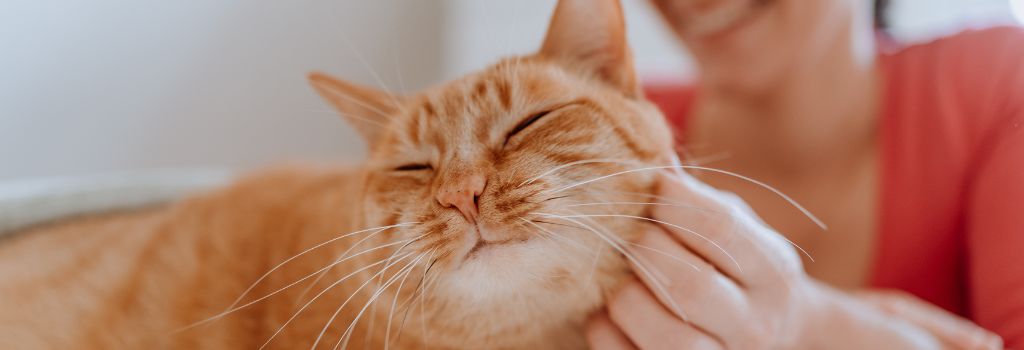Leaving your pet at home when going on vacation or a business trip can be anxiety-inducing for any pet owner – especially if it’s for more than a day or two. However, there’s one thing that pet owners and veterinary professionals alike agree on that can help ease your worries and set your pet up for a stress-free experience: leaving detailed instructions for your pet sitter.
With today’s pet owners prioritizing their pet’s comfort and care more than ever before, pet sitters have become commonplace and a frequently used alternative to pet daycares and boarding facilities. Unlike boarding, which requires pets to adapt to a new environment, an in-home pet sitter allows them to stay in their familiar surroundings, reducing stress and maintaining their routine. Whether you’re hiring a professional pet sitter or relying on a trusted friend or family member, providing clear, thorough instructions is key to ensuring your pet receives the best care possible while you’re away.
In this guide, we’ll cover everything you need to include in your pet sitter’s instructions, along with a checklist to help you prepare your home before their arrival to make sure things go as smoothly as possible.
What Every Set of Pet Sitter Instructions Should Include
Your pet sitter will be spending quite a bit of time with your pet, so it’s important that they’re able to get to know them! When sharing information about your pet, don’t be shy; in order for your pet to receive the best care and for the sitter to have everything they need to do their job well, they’re going to need to know your pet almost as well as you do.
Essential Information About Your Pet
To start writing out the best set of pet instructions, consider sharing the absolutely essential information that’s needed to take care of your pet. Even if you’ve already given the pet sitter a brief run down of your pet’s name and breed, it can’t hurt to have this information written down and easily accessible just in case they need it. Essential pet information typically includes:
- Your Pet’s Name, Age, and Species or Breed – While some of these details may seem obvious and inconsequential to pet owners, they can help your pet sitter establish familiarity with your pet and give them the information they need to provide proper care.
- Your Pet’s Personality & Behavior – Letting your pet sitter know about your pet’s personality can help them tailor their approach to caring for your pet. Is your pet anxious and shy around strangers? Or are they super outgoing and will be the sitter's new best friend in no time at all? Let your pet sitter know!
- Your Pet’s Daily Routine – Animals are creatures of habit, and once they are set on a routine, they’re going to expect to follow it, even if you’re out of town. Sharing details about your pet’s daily routine, including when they usually take bathroom breaks, have playtime, or wake up and head to bed, can make your pet feel more secure while you’re gone and give your pet sitter some additional structure for their visits.
- Your Contact Information – Before you leave, be sure to leave the pet sitter a reliable way to contact you while you’re gone. Whether it’s a phone number or email address, make sure they have a way to contact you in case of emergency or if they have questions or concerns about your pet or home.
- An Emergency Contact Person – Just in case you can’t be reached, it's important to have another person your pet sitter can contact in case of an emergency. Make sure this is not only a person you trust, but also someone who lives nearby and can be available to respond to the pet sitter if needed.
- Your Veterinarian and the Clinic’s Contact Information – When sharing information, don’t forget to let your pet sitter know who your family veterinarian is. Be sure to also include a phone number and address for the clinic so the pet sitter has easy access to them and get in touch with your veterinarian without having to look anything up themself.
If your pet has chronic health issues, it can also be a good idea to let them know where any emergency clinics in the area are located just to be safe if something were to happen outside of your veterinarian’s regular business hours.
- The Care Dates and Services Agreed Upon – When it comes to your pet’s care, it’s better to be safe than sorry! It’s never a bad idea to leave your pet sitter a reminder of the agreed-upon dates on which their services are expected. This can help avoid any confusion or mistakes and ensures that your pet won’t go without care. When writing up your instructions, consider including a line that says something like,” Thanks for agreeing to watch Spot from Monday, June 1, through Saturday, June 6!”
In addition to the dates, it can be helpful to leave reminders about any extra services that you may have arranged with your sitter. If your sitter agrees to stop by and walk your dog twice a day, you can include any relevant information about your dog’s walking routine as well. For example, you can add a note saying, “Spot’s leash and harness are by the front door. We typically take him for a long walk in the morning and a shorter one in the afternoon.”

Feeding Schedule and Dietary Instructions
Some of the best sitters have multiple clients, and remembering which pet eats what and how much of it can get a little confusing – especially in households with multiple pets. Leave no room for confusion or mistakes, and leave your pet sitter a reminder of your pet’s dietary needs and feeding schedule. In your pet sitter instructions, be sure to include:
- Food type/brand and where it’s located
- Feeding schedule and portion size
- Food allergies or restrictions
- Treats and rewards and when your pets can have them
Health Care and Medication Instructions
Pet parents with sick or chronically ill pets need a break, too, and many pet sitters are more than happy to feed your pet special diets, administer medications, and manage any extra care requirements that your pet may have. However, be sure to discuss any of your pet’s health conditions or medical needs when first booking your pet sitter. It’s not a good idea to find out that your pet sitter doesn’t know how – or isn’t willing – to give your diabetic cat their insulin when you’ve already left town!
Leaving specific instructions regarding your pet’s medical needs is especially important for helping your pet sitter identify any abnormal behavior in your pet and determine if they need help or professional medical attention. For example, if you forget to mention that your dog has vision loss, a pet sitter with a keen eye may notice them bumping into things or having trouble finding their bed or food bowl and think they’re having a medical emergency – creating unnecessary stress for everyone. To give your pet sitter all of the medical information they need, be sure to mention the following:
- Medical conditions and care needs
- Medication types, schedules, and administration methods
- Fear and anxiety triggers (like thunderstorms, fireworks, or knocking at the door)
- Any quirky behaviors they may have that could be confused for a medical condition (like lots of vocalization or shaking due to excitement)

How to Prepare for a Pet Sitter: Pet Sitter Checklist
When it comes to having someone watch your pet, a little preparation goes a long way. Use this pet sitter checklist to make sure you have everything ready for your pet sitter to arrive:
- Write Detailed Pet Care Instructions – The better the pet sitter instructions you leave, the more you’ll feel at ease while you’re away from your pet. As we mentioned above, be sure to include feeding schedules, portion sizes, medications, emergency contacts, and any quirks your pet may have that the pet sitter should know about.
- Pet-Proof Your Home – Securing your home and making sure there’s nothing your pet can get into or injured by is an absolute must before leaving them with a pet sitter. Remove potential hazards like toxic plants, medications that may be in reach, electrical cords, or anything your pet might chew on. Pets can also get tangled up in curtains or the strings for hanging blinds, so be sure to secure those, too, before leaving!
- Stock Up on Supplies – Make sure there’s enough food, treats, medications, litter, cleaning supplies, and any other essentials your pet may need so that the pet sitter has everything they’ll need to ensure your pet gets proper care.
- Ensure Easy Home Access – Regardless of whether your pet sitter will also be house-sitting or just dropping by a few times a day, you’ll want to be sure they can easily get in and out of your home. Provide a working key or access code, and double-check that the sitter knows how to use it before you leave.
- Introduce Your Pet to the Sitter – If possible, schedule a meet-and-greet so your pet is comfortable with their caregiver, and vice versa! A little familiarity can go a long way in keeping your pet from getting anxious as a new person is coming into their home.
- Set Up a Safe and Comfortable Space – Ensure your pet’s sleeping area, food bowls, litter box, and favorite toys are accessible. If you prefer to let your pet free-roam throughout the house or want to keep them in a specific area, be sure to let your pet sitter know ahead of time.
- Leave Contact Information – Your pet sitter should always be able to get in touch with you or another designated caregiver. Be sure to provide the pet sitter with your number, your vet’s info, and a backup emergency contact. If you’re planning on being in areas with limited phone service or internet access, let your pet sitter know before you leave and give your backup contact the authority to make decisions regarding your pet in case of emergency.
- Outline Your Pet’s Routine –Like many of us, pets thrive on consistency, so share their usual walking schedule, feeding times, and play preferences to help your pet sitter keep them on schedule. This can go a long way in preventing anxiety or bad behavior while you’re away.
- Clarify House Rules – Let the sitter know if pets are allowed on furniture, in certain rooms, or if they have specific behavior rules.
- Confirm Departure & Return Dates – Make sure the sitter knows exactly when you’re leaving and when to expect you back so that your pet gets the agreed-upon care.
If you have questions and you'd like to reach out to us, you can call us directly at (405) 329-6555, or you can email us at [email protected]. Don't forget to follow us on social media Facebook, Instagram.


